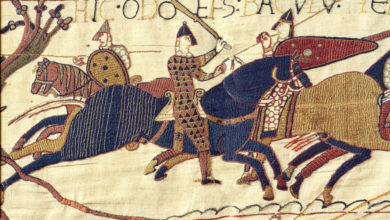
Podcast: Play in new window | Download
London is the capital city of England and the United Kingdom and is located in the south-east of the country, standing on the river Thames around 50 miles or so from where it empties into the North Sea. The Greater London area incorporates two cities, The City of London and the City of Westminster. It has been around for a long time with evidence suggesting that there has been a settlement there since around 4800 BC. The Romans called it Londinium and it has grown since then into one of the most important cities in the world.
Although archaeologists found evidence of an ancient settlement on the south foreshore of the Thames in the form of timber structures which date back to around 4800 BC and a bridge dating to 1750 BC, it wasn’t until the Romans came along in AD 43 that the scattered settlements that were around at the time started to coalesce into a more substantial one. However, this first major settlement didn’t last long as in around AD 63 Queen Boudica and her Iceni tribe stormed it and burned it to the ground.
The Romans were determined not to be beaten though and by the year 100 the Roman settlement called Londinium had taken over the reins from Colchester as the capital of Roman Britannia with a population of around 60,000 people.
However, although the Romans had intended Londinium to be a permanent presence, they didn’t figure on the collapse of the Roman Empire itself and when this occurred in the early 400s, London’s status as a capital city disappeared, and so did its inhabitants as it was effectively abandoned.
However, over the next 500 years, London started to grow again and it became a major port during the rule of Alfred the Great after he abandoned the nearby Anglo-Saxon settlement of Lundenwic and brought life and trade back to the once Roman walled city. It was attacked by the Vikings on several occasions following the establishment of the Danelaw throughout large portions of the rest of the country, but the settlement endured, with the last attack in 994 being repelled. From this point forward, London’s importance and size increased dramatically. By the 11th century, it was the largest town in England and it also became home to one of the most impressive churches in Europe after Edward the Confessor built Westminster Abbey.
The Abbey saw its first coronation after the Battle of Hastings when William the Conqueror was crowned as King William on Christmas Day 1066. In celebration, and as a demonstration of his power and resources, the King built the Tower of London, the first of a long line of castles built in his name around the country. He also began building Westminster Hall, which became the Palace of Westminster, the location of the United Kingdom’s modern seat of government. The treasury was moved from Winchester to the Tower of London shortly afterwards, effectively turning the City of Westminster into England’s new capital. However, although the City of Westminster became England’s seat of government, its commercial capital remained the City of London.
By 1300, the population had reached 100,000 but this was about to be curtailed when in the mid-1300s the Black Death reduced that number by a third.
The ownership of property in London had been either with the crown or with the church, but by Tudor times and with the reformation under Henry VIII a lot of property that had been previously owned by the church passed into private hands and this had the effect of increasing yet again the amount of trade and business undertaken in the city. As the sixteenth century progressed companies such as the East India Company opened trading routes to the New World and London became Europe’s number one seaport.
By 1605, London’s population had swelled to around 225,000, but the plague returned in 1665 which killed upwards of 100,000 people. Tragedy struck the city again the following year but in a much different way when a large proportion of the predominantly wooden built city was destroyed by fire in what became known as the Great Fire of London in 1666.
The rebuild took ten years and the centrepiece was a magnificent new church designed by Christopher Wren. It took considerably longer than ten years to complete but by the time St. Paul’s Cathedral was completed in 1708, it was a spectacle to behold.
The newly designed London street layout allowed for even more expansion with new districts such as Mayfair being born during the Georgian era. Up until this point most of London’s development had taken place North of the river and so more bridges were built at this time too which allowed even more expansion of the city to the South.
In 1762 Buckingham House was acquired by George III and following significant enlargement over the next 75 years it became the principal residence of all subsequent monarchs resulting in a name change to Buckingham Palace.
London saw the formation of arguably the world’s first professional police force when the Bow Street Runners was formed in 1750 with more than 200 offences at the time being punishable by death. This wasn’t enough to stop, or even apprehend one of the world’s most infamous killers though as the Autumn of Terror saw Jack the Ripper murdering innocent women on the streets of London in 1888.
More waves of destruction came about in the early and mid-twentieth century as the Germans bombed London in both world wars with the bombs of the Luftwaffe claiming the lives of 30,000 Londoners during the Blitz of World War II.
Following the war, the population of Greater London steadily declined until it reached around 6.8 million in the 1980s, almost two million fewer than 50 years before but it bounced back and its current population is estimated to be just short of 9 million. In 2008 Time magazine declared that London was one of the three most influential cities on the planet alongside New York and Hong Kong and in 2015 it was ranked as the most visited city in the world with an estimated 65 million people visiting it.
Podcast: Play in new window | Download





